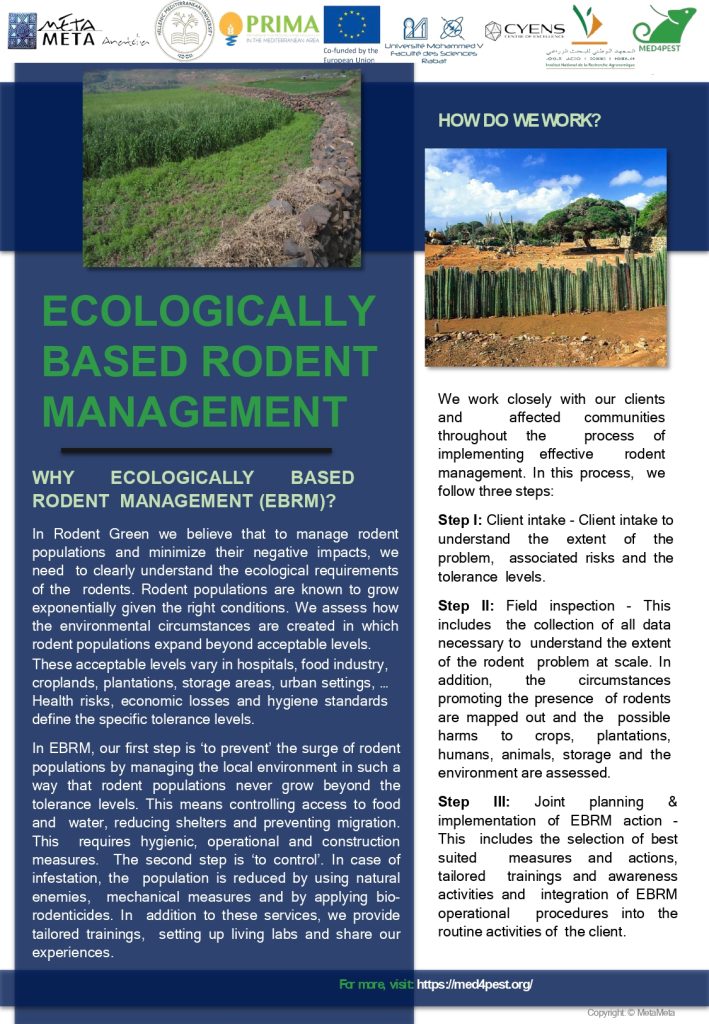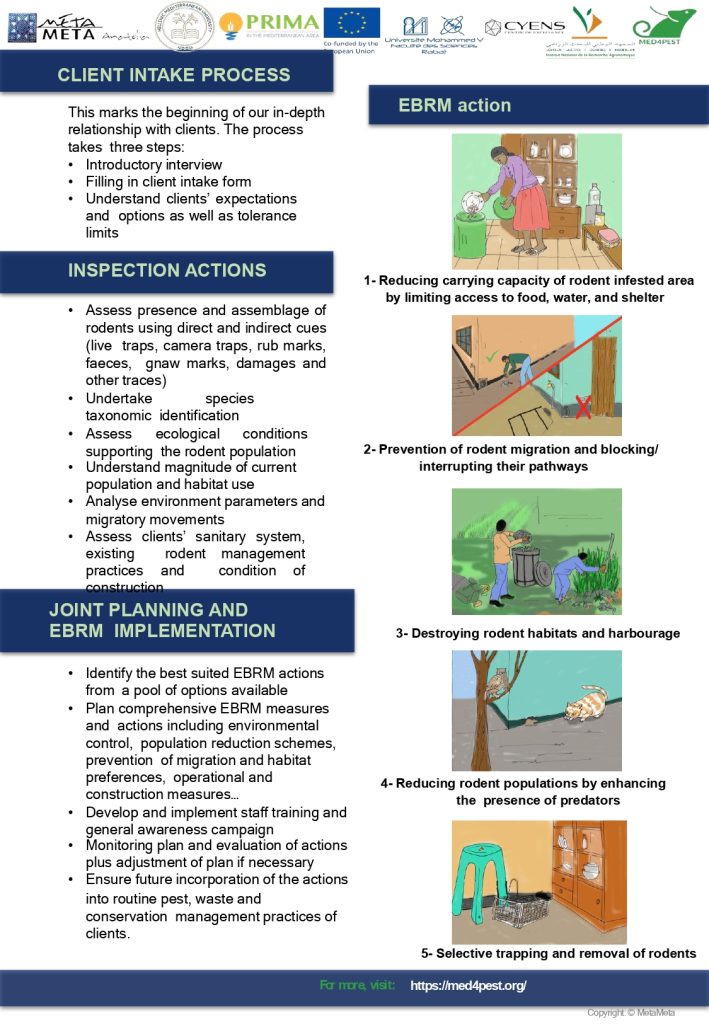The presence of rodents in environments can cause significant damage, affecting not only stored products but also infrastructure and public health. To manage these populations effectively, an ecological approach known as Ecologically Based Rodent Management (EBRM) is recommended. This method stands out for its holistic view that considers the ecological needs of rodents and incorporates preventive measures tailored to control their presence.
EBRM aims to reduce the growth of rodent populations by modifying their immediate environment, such as limiting access to food and water, eliminating potential shelters, and preventing migration. This approach not only controls existing infestations but also prevents their occurrence by addressing the factors that promote their development.
Effective management requires assessing the environmental conditions that favor rodent proliferation. Tolerance levels vary depending on health risks, economic losses, and hygiene standards specific to each sector. EBRM begins with preventive management of the local environment, followed by integrated controls such as using natural enemies, mechanical measures, and bio-rodenticides.
The success of EBRM relies on close collaboration with clients and affected communities. This process involves several key steps: client intake to understand the extent of the problem, on-site inspection to assess damage and conditions favoring rodents, and joint planning and implementation of tailored measures.
Control actions include a thorough assessment of rodent presence, taxonomic identification of species, and analysis of ecological and environmental conditions. EBRM planning and implementation require adequate staff training, ongoing awareness campaigns, and rigorous monitoring to adjust actions based on the results obtained.
By adopting these practices, warehouses and storage facilities can not only reduce the carrying capacity of rodents but also prevent their migration and destroy their habitats, contributing to a healthier and safer environment.


